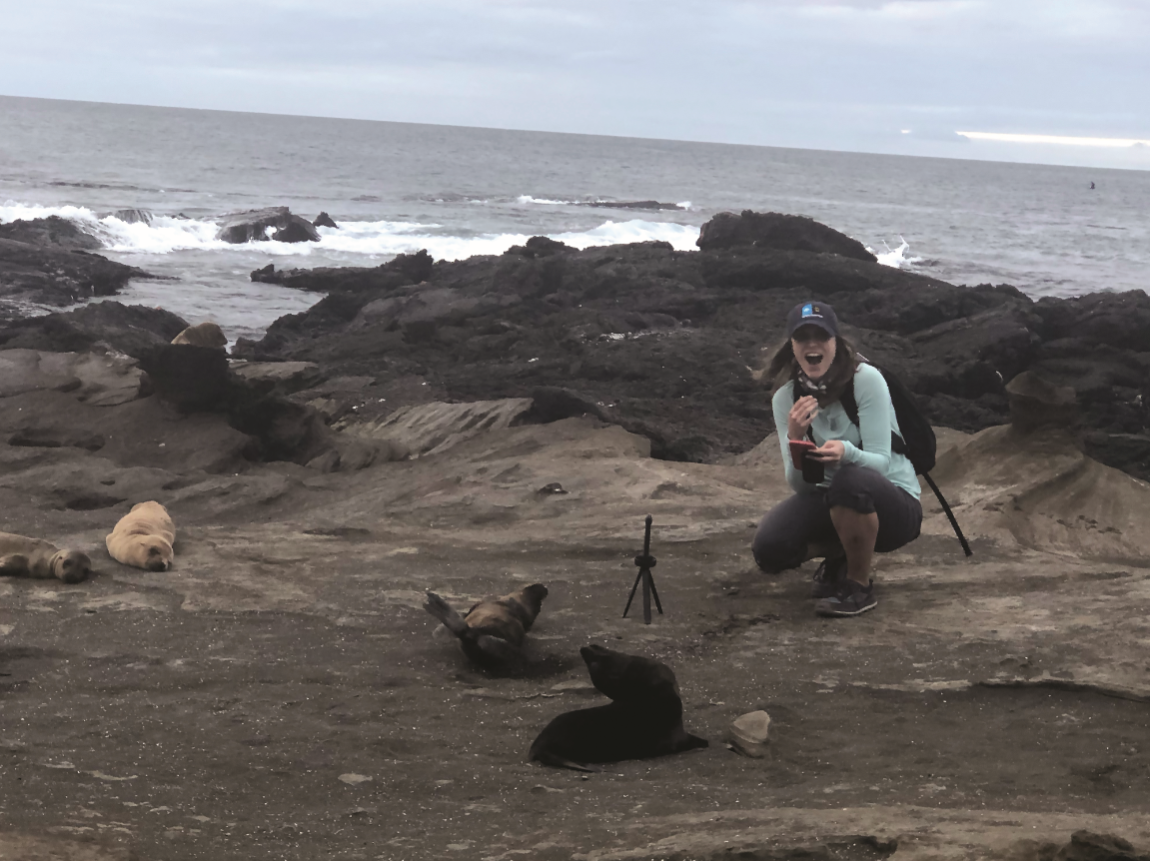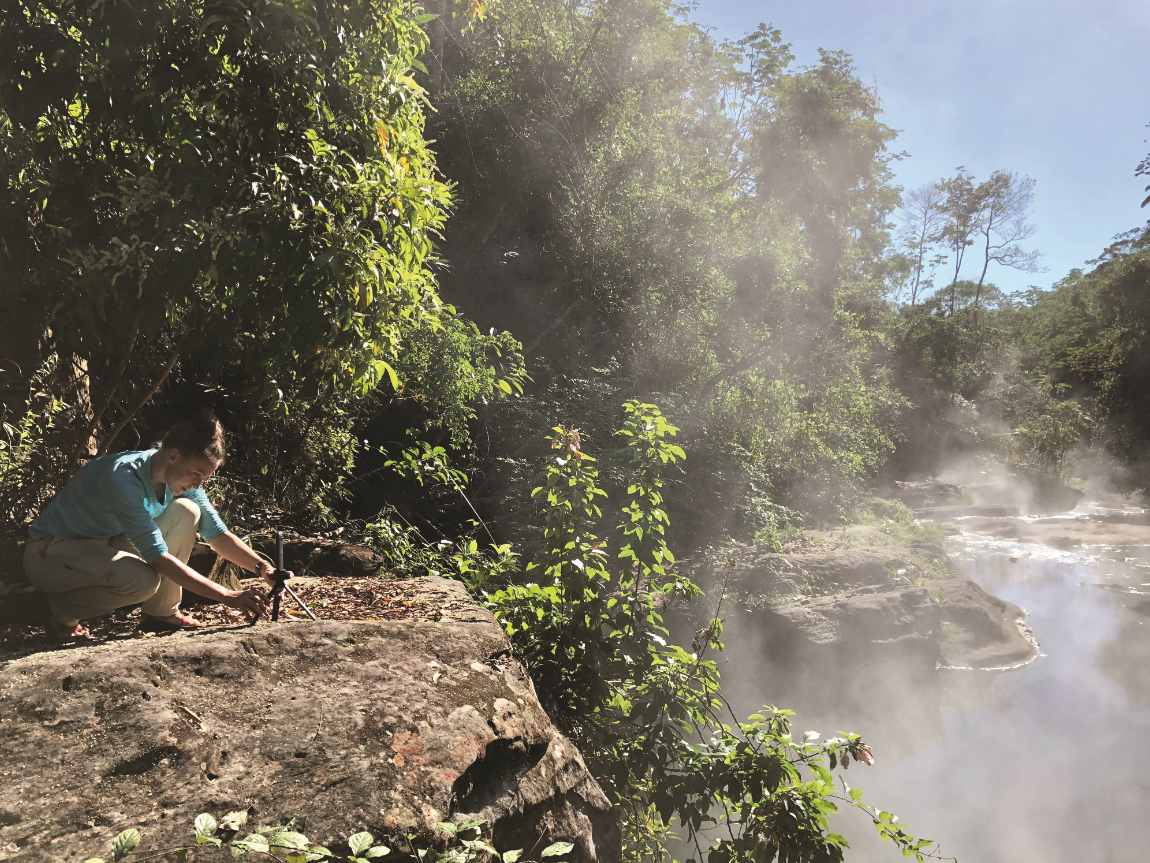For many teachers, “professional development” takes the form of attending a class, workshop or conference. But for Becky Schnekser ’05, M.S. ’06, it means trekking to a literally boiling river deep in the Amazonian jungle or swimming with 3-foot-long marine iguanas in the Galápagos Islands.
An elementary school science teacher at Cape Henry Collegiate independent school in Virginia Beach, Schnekser is one of 40 teachers in the United States and Canada who were awarded a highly competitive two-year Grosvenor Teacher Fellowship from Lindblad Expeditions and National Geographic in 2018. The annually awarded fellowship provides fieldbased professional development opportunities on National Geographic scientific expeditions for pre-K-12 educators.
Last July and August, Schnekser spent two weeks in the Amazonian rainforest of Peru with scientists studying the recently discovered largest documented thermal river in the world, Shanay-Timpishka, which means “boiled by the heat of the sun.” Flowing hot for roughly four miles, the river actually boils at some points and can reach temperatures as high as 210 degrees Fahrenheit—more than hot enough to cook alive hapless frogs and other animals that occasionally fall into the steaming water.

Schnekser, who helped collect water samples and document fish species in the cooler portions of the river, explains that thermal rivers are typically the result of nearby volcanoes, but this river is unusual in that it’s more than 430 miles from the nearest active volcano. She will return to Shanay-Timpishka this summer to help with a biodiversity survey and to aid scientists searching for life in the river.
In November and December last year, Schnekser spent 10 days working in the Galápagos Islands, where she completed behavioral studies of endemic species such as marine iguanas in an effort to study the impact of climate change on animal life there. “The temperature of the water is rising faster than these creatures can evolve to survive,” she said, which is decreasing food sources like algae and fish.
As part of her fellowship, she also took 360-degree photos and videos that she is using to aid in documentation and conservation efforts, as well as to create virtual reality tours and augmented reality experiences that teachers and students worldwide will be able to access.
Schnekser’s own students “absolutely love” hearing about her field studies, she said, noting that her second-grade class created a faux documentary with the students pretending to be marine iguanas because, they told her, “we’re experts on their behavior now.”
As a teacher, Schnekser eschews textbooks in favor of real-life experiences “that will inform [students] as adults going into the world later.” For instance, she takes a group of 15 fifth-graders each year on a trip to assist with endangered coral reef studies in the Florida Keys. She also contacts scientists as far away as Africa for videoconferencing lectures so her students can learn from professionals working in the field.
She hopes her experiences will inspire other teachers to view professional development from a new perspective. “Find a way to get into the field and bring it back to the classroom to give [students] the experience of how what you’re teaching translates to the real world.”



Leave a Comment